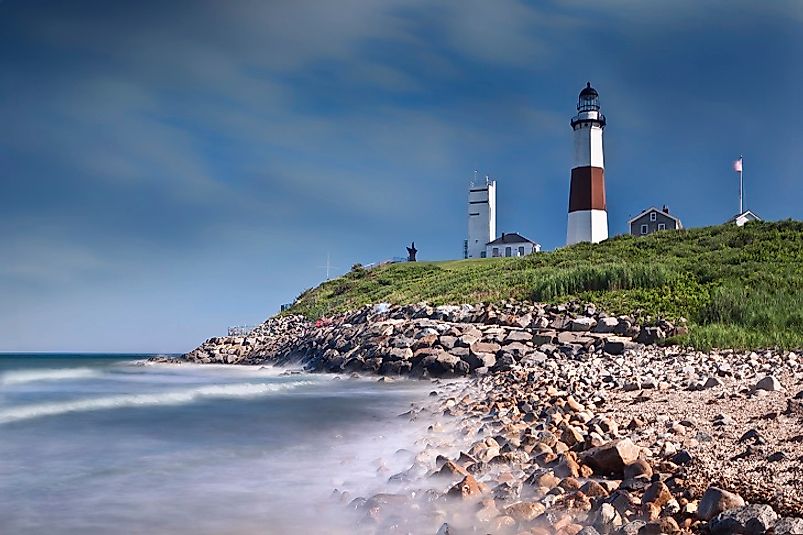Where In The World Is Long Island?

5. Description
Long Island is to be found located along the northeastern coastal area of the United States of America jutting out into the Atlantic Ocean. Long Island stretches across parts of the eastern areas of New York City, which covers its neighboring Manhattan Island to the west as well. It is said to be a home to four counties in New York State, which include Kings and Queens counties in the Brooklyn area of New York City, and the Nassau and Suffolk counties which cover the area in Long Island's eastern region. The colloquial expression of "Long Island" is often used to describe only the portions of the island that are suburban or semi-rural in their regional character, thereby excluding the Kings and Queens areas of New York City. Long Island found neighboring one of the the most populated areas in the country, and its neighbor, New York City, is ranked at the 9th position among the largest cities in the world. Its covered area within the USA is around 1,401 square miles, and gains the 11th position among islands in the country, and the 149th rank among islands from around the world.
4. Historical Role
The peoples who have lived on Long Island through the ages have developed it into a cultural center, and have contributed to a number of globally important industrial, technical, and financial innovations as well. Long Island was first explored by Europeans in 1524, when the Italian Verrazzano came to the area working in the name of the French Crown, after which the English came here in the year 1609. But the credit of exploring Long Island goes to the first European person to do so, a Dutchman named Adriaen Block. The famous Battle of Long Island was also fought here during the American Revolutionary War, in which the Britishers won in the area. The famous Brooklyn Bridge is also found, connecting Long Island with Manhattan Island to its west. It was also seen that Long Island was converted into an area in the Space Age, as many space flights and space shuttles were constructed by aeronautics manufacturers here.
3. Modern Significance
Long Island continues to play a vital role in the present era, as it remains one of the hubs for the aviation sector. In fact, many of the first Space Shuttles were developed in this area. The factories of Grumman Aircraft, Fairchild, and Curtiss were among the recognizable aviation names pioneering groundbreaking spacecraft here. Many famous entities in other fields have also established their offices in the Long Island area, such as Zebra Technologies, Stony Brook University, and East’s Coasts (which is a large industrial park), and the many other industries from varied fields who have established their centers on Long Island. The means of transportation in and around Long Island today are facilitated by ferries, trails, and the historical bridges which are found connecting various parts of this Island.
2. Habitat and Biodiversity
The habitat of the Long Island area includes beaches, cliffs, marine environs offshore, and much more around this large in the USA. It also has a long coastline, which has opened up its area to the migratory species of fishes which travel through the brackish waters of the area. The areas of Long Island are also a home to many wild animals and birds, including owls, osprey, herons, and egrets.
1. Environmental Threats and Territorial Disputes
The main threats the natural surroundings are facing are those resulting from the increased human population on Long Island, and the consequent loss of virgin coastlines and inland wetlands in the area. The former wealth of natural resources found here has also declined significantly in the area. An astounding 500,000 septic tanks are found underground in the area, and their placements therein have contributed to a decrease in the population of fishes and migratory birds here. The increasingly acidic water, caused by extreme levels of pollution have led to shifts in aquatic flora and fauna and decreases in underwater oxygen, both of which are also factors disrupting the habitats of the fish and birds native to Long Island.











